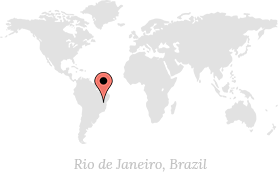HTML - Programming Language
- HTML stands for Standard Markup Language for creating webpages.
- HTML describes the structures of a webpage.
- With the help of HTML we can own website.
- HTML is a easy language so we can learn it easily.
- HTML consists of a series of elements
- HTML elements tells the browser that how to display the content.
- HTML elements are the building blocks of HTML pages
- HTML elements are represented by <> tags
CSS - Programming Language
- CSS stands for Cascading Style Sheets.
- CSS describes how HTML elements are to be displayed on screen, paper, or in other media.
- CSS saves a lot of work. It can control the layout of multiple web pages all at once.
- CSS is the language for describing the presentation of Web pages, including colors, layout, and fonts.
- It allows one to adapt the presentation to different types of devices, such as large screens, small screens, or printers.
- CSS is independent of HTML and can be used with any XML-based markup language.
- External stylesheets are stored in CSS files.
- Types of CSS
- Inline CSS
- Internal CSS
- External CSS
JavaScript - Programming Language
- JavaScript is the Programming Language for the Web.
- JavaScript can update and change both HTML and CSS.
- JavaScript can calculate, manipulate and validate data.
- JavaScript® (often shortened to JS) is a lightweight, interpreted, object-oriented language with first-class functions.
- And is best known as the scripting language for Web pages.
- But it's used in many non-browser environments as well. ...
- JavaScript can function as both a procedural and an object oriented language.
jQuery - Programming Language
- jQuery is a small, fast and lightweight JavaScript library.
- It is cross-platform and supports different types of browsers.
- jQuery is platform-independent.
- jQuery means "write less do more".
- Because it takes a lot of common tasks that requires many lines of JavaScript code to accomplish, and binds them into methods that can be called with a single line of code whenever needed.
- jQuery simplifies AJAX call and DOM manipulation.
- Following are the important features of jQuery.
- HTML manipulation
- DOM manipulation
- DOM element selection
- CSS manipulation
- Effects and Animations
- Utilities
- AJAX
- HTML event methods
- JSON Parsing
- Extensibility through plug-ins
Bootstrap - Programming Language
- Bootstrap is a free and open-source CSS framework directed at responsive, mobile-first front-end web development.
- It contains CSS- and (optionally) JavaScript-based design templates for typography, forms, buttons, navigation, and other interface components. ... js framework.
- Bootstrap 4 is the newest version of Bootstrap.
- Bootstrap 4 supports all major browsers except Internet Explorer 9.
- The container class is one of the most important Bootstrap classes.
- It provides margins, padding, alignments, and more, to HTML elements.



0 Comments